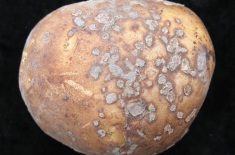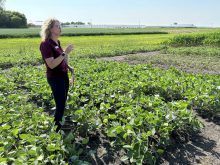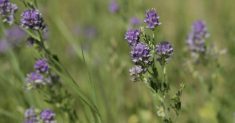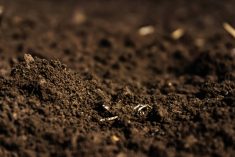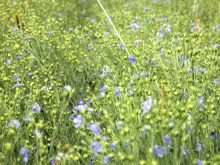North Dakota grain farmer Glenn Bauer is reaping the benefits of “livestock” in his operation – but you’d need a microscope to see most of them.
“We don’t have any cows, but we’ve got a lot of livestock that we try to feed below the surface,” Bauer said during a panel presentation on no-till soil biology at the recent ManDak Zero-Tillage Association annual workshop.
Bauer began farming in 1963 and switched to no till and direct seeding at Bacon Heights Farms in 1983. In the last few years, he realized the biggest payoff comes from improved soil health, and has become an advocate of crop diversity as the next step in the evolution of no till.
Read Also

Manitoba canola industry has new frontiers
Canola oil is still the main priority for the sector, but canola meal is increasingly the subject of research looking for new markets and uses for the oilseed’s byproduct.
Apart from the four main cool-and warm-season grasses and broad-leaved-crops, Bauer may seed up to nine main and cover crops, including alfalfa, buckwheat, clovers, radishes, turnips, sunflowers, proso millet, and peas.
DEVASTATED
Although he loves to experiment, Bauer said he felt “devastated” after a field sown to a cover crop yielded two bushels to the acre less than a control portion, even though it looked “way better.” But he took the temporary setback in stride in the belief that increased levels of organic matter, as well as better water infiltration and nutrient cycling, would pay off when a dry year comes along.
In 2009, he sowed a field to radishes, then corn the following year. The radish seed not picked up by the combine came back as “thick as the hair on a dog’s back” as the corn dried down, and Bauer said he believes this stimulates microbial activity which, in turn, breaks down corn residue faster.
Bauer uses mainly bin-run seed for his cover crops in order to keep costs down. In fall of 2008, he seeded 1,000 acres of cover crops at a cost of $22.38 per acre, including seed and seeding costs.
IMPROVED SOIL ORGANIC MATTER
His fields, mainly silty loam, were down to two per cent organic matter in 1984, but now has more than four per cent, according to soil tests performed in 2009.
Due to the short growing season, his cover crops don’t get very tall, but the extra growth has improved “soil armour” to the point his entire farm is now well covered all season long. If it gets excessive, he puts in a broadleaf crop such as peas to speed up the breakdown and nutrient cycling.
Bauer said he has seen a reduced need for insecticides, and now only uses them to protect confectionery sunflowers, which are particularly sensitive to downgrading. He uses fungicides only if weather conditions are unfavourable when wheat is flowering.
Another cover-crop convert is Dustin Williams, who farms 4,200 acres near the Souris River with his father Wayne. He’s been no tilling since the mid-1990s and using cover crops for two years.
It’s not a new thing on his farm, said Williams, because his grandfather used plow-down green manures such as clover, fall rye, and alfalfa in summer fallow or interseeded with cereals for years to build nutrients and soil quality.
A first attempt at harrowing to encourage volunteers post-harvest was disappointing because the combine they use has minimal seed losses, but eight-inch green cover appeared in the canola before freeze-up.
GOOD SUCCESS
Last year, a trial of inter-cropped peas and Xceed canola saw the brassica juncea get crowded out. Instead of straight cutting to catch the canola, he used a Sund pickup header and let the shattered pods fall where they may. Losses were about 40 to 60 seeds per square foot, which were then washed in with 1.5 inches of rain a week later.
“That was all the incorporation it needed. It really took off from there,” he said. The cover crop reached 12 to 14 inches of height, even survived a particularly hard frost.
Williams also had good success in last year’s deluge with daikon tillage radishes at six pounds per acre in a wet, unseeded field that had previously had compaction and salinity problems. By freeze-up, the radishes were three to five inches in diameter and penetrated eight inches into soil. Next year, he hopes to try Groundhog radishes to punch through the hardpan which is nine to 12 inches below the surface.
Williams is also planning to mount a Valmar air-delivery system on his swather to disperse small-seeded cover crops such as clover, millet, canola, or radish to make better use of a field operation. daniel. [email protected]
———
“Wedon’thaveanycows,butwe’vegotalotof livestockthatwetrytofeedbelowthesurface.”
– GLENN BAUER






